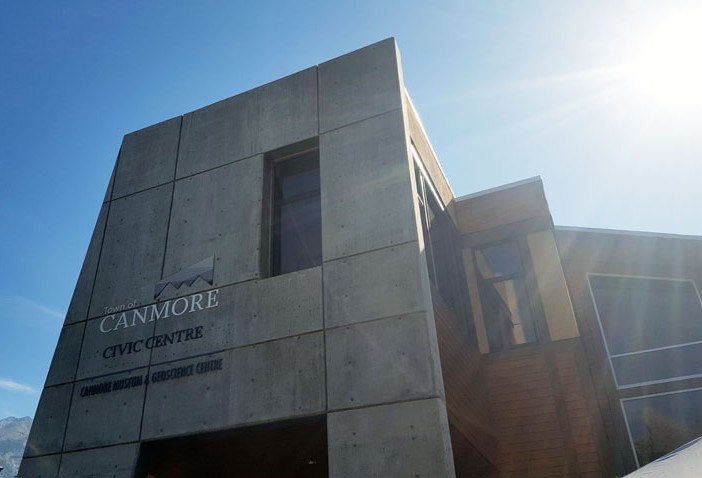CANMORE – Elected officials approved two separate rezoning applications for Spring Creek and south Canmore at the beginning of the month, but it was clear the latter caused some concern for the mayor.
Council gave second and third reading to two rezoning applications the same night of the public hearing for each. But it was the application to rezone a lot on Fourth Street from a single family home, or R1 zoning, to a duplex or R2, that was difficult for Mayor John Borrowman.
Borrowman said he has heard concerns from residents of the neighbourhood around how it is slowly changing, and he wanted to be clear even with an approval of this application, council would be apprehensive if similar changes were proposed in the future.
“I recall during discussions on the Municipal Development Plan (MDP) that council indicated we would want to have a more substantive public engagement if there was going to be any proposed changes to zoning of entire districts, and while that is not what is happening here, it could (with another application),” he said.
“I will support the motion, but in doing so I would like to make my position clear to administration that if there were other homeowners coming along as a result of this looking for similar changes, I would be very hesitant to entertain (them) without more meaningful community engagement in that neighbourhood.”
Junior planner Richard Williams presented the rezoning for 530 Fourth St. at the public hearing, noting that the house has experienced a history of sewage issues and redevelopment would help address that issue.
Williams said a duplex would increase site coverage on the lot by 40 to 45 per cent and a larger overall building could be constructed, but the setbacks and heights remain the same.
Homeowners Tim Murphy and Wanda Ellerbeck spoke about their application and the fact that their property exists on the current boundary between the R1 and R2 districts in south Canmore.
Murphy said when they purchased the home in 1992 they were unaware of the history of sewage backups in the basement, noting they have experienced five over the years and had to renovate each time to remediate the damage. He said it is at the point they won’t use their basement anymore and the reason for the sewage backups is a low spot in the wastewater system in front of their home.
“We are the canary in the coal mine – if there is anything wrong in the sewers of south Canmore we are the first to find out,” he said. “As far as I know there is no safe level of fecal matter, so our only solution is to have no basement anymore.”
In order to stay in that location in their retirement, Murphy said it’s only financially feasible if they redevelop it is as a duplex and sell the other half to finance the redevelopment.
“We love it there, “ he said. “We want to stay in Canmore and where we live.”
Neighbour Tracey Henderson spoke against the rezoning, saying it sets an example others may follow.
“Ultimately, what will happen and our fear is that we are allowing individual landowners to gradually move that zoning line property by property down the street and shouldn’t there be a more deliberate and defined planning process?” she said.
While half of the homes adjacent to the lot are already duplexes, the other half remain single-family homes. Henderson argued that is a reason why the zoning should remain as it currently is.
“Really there is a bigger issue here and that is the gradual changing character of our street and neighbourhood, which is being facilitated by seemingly small variances and changes,” she said. “Our neighbourhood is changing and it feels like it is changing in the wrong way.”
While administration recommended postponing second and third reading for consideration, council voted unanimously in favour.
Councillor Joanna McCallum pointed to wording in the MDP that supported creating a more diverse range of housing options for the community.
“In terms of change, this is a pretty gentle density change,” McCallum said, adding that neighbourhood is already currently zoned for secondary suites. “We know two families can live on one parcel of land in that neighbourhood if they want and in this case there would be more parking.”
Other council members noted this would not be considered a spot zoning or create an island for a single property zoned differently in the neighbourhood, but was an adjustment of the current border between the two different zonings.
Development planner Nathan Grivell presented a rezoning for Spring Creek Mountain Village that would change the boundary of a public use district in stage two of the subdivision’s redevelopment plans.
Grivell said the change is a net increase of 210 square metres for future green space in the subdivision.
Developer Frank Kernick spoke to his application, telling council Spring Creek has been working over the past year to fine-tune the location of its main square.
“We are looking at all the buildings around the square and making sure they fit into the concept,” Kernick said.
He said the small amendment to the public use district boundary is needed to proceed with Spring Creek’s Jack Pines Lodges development.
A major application for the overall rezoning for stage three of his redevelopment is expected next year.




